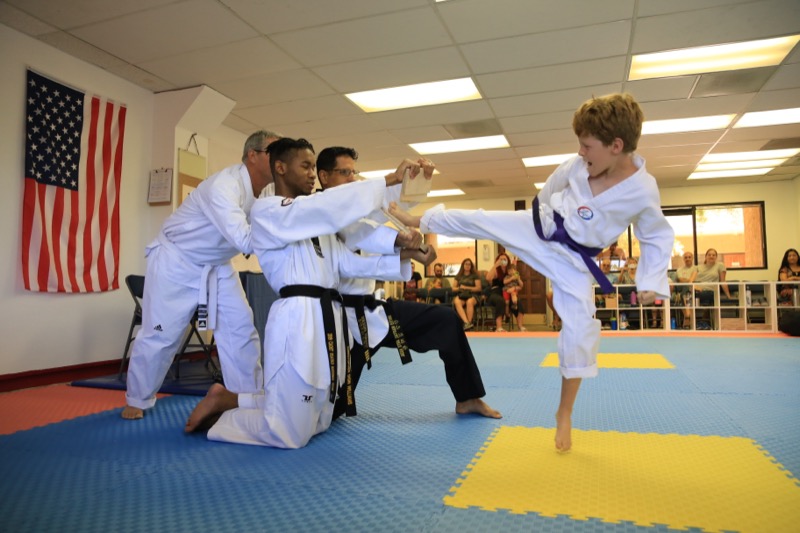
In today’s fast-paced world, anxiety among children and teens has become a prevalent concern. From academic pressures to navigating social challenges, young people often face overwhelming stress that can affect their emotional and physical well-being. While traditional methods like therapy and mindfulness exercises play a vital role in managing anxiety, parents are increasingly turning to activities like martial arts to support their child’s holistic development. Beyond self-defense, martial arts offer a blend of physical activity, mental discipline, and emotional resilience, making it a powerful tool to combat anxiety in children and teens.
Understanding Anxiety in Children and Teens
Anxiety is a natural response to stress, but for many children and teens, it can become chronic, affecting their ability to function effectively in everyday life. Common symptoms include:
- Difficulty concentrating
- Restlessness or irritability
- Physical complaints such as headaches or stomachaches
- Avoidance of certain activities or social situations
The sources of anxiety can range from academic pressures and family dynamics to social issues and major life transitions. Providing young people with healthy outlets to manage these feelings is critical to fostering their long-term emotional well-being.
How Martial Arts Alleviates Anxiety
Martial arts, encompassing disciplines such as taekwondo, karate, judo, and Brazilian jiu-jitsu, offers a structured environment where children and teens can channel their energy positively. Here’s how martial arts help reduce anxiety and build emotional resilience:
1. Structured Discipline and Routine
Children and teens thrive in environments with structure and clear expectations. Martial arts classes follow a consistent routine, from warm-ups and drills to cool-downs and reflections. This predictability helps create a sense of stability, which can alleviate the uncertainty that fuels anxiety.
- Time Management: Regular class schedules teach children how to prioritize tasks, helping them manage academic and extracurricular commitments more effectively.
- Accountability: The progression through belt levels fosters accountability, encouraging participants to take ownership of their growth and achievements.
2. Physical Activity as a Stress Reliever
Exercise is a natural remedy for anxiety, as it triggers the release of endorphins, the body’s “feel-good” chemicals. Martial arts provide a full-body workout that enhances cardiovascular health, builds strength, and improves flexibility.
- Energy Outlet: The physical intensity of martial arts offers a safe way to release pent-up energy or frustration.
- Improved Sleep: Regular exercise often leads to better sleep, which is essential for managing anxiety and maintaining overall mental health.
3. Fostering Mindfulness and Focus
Martial arts emphasize being present in the moment, teaching participants to focus on their breathing, movements, and surroundings. This mindfulness training is similar to meditation, helping children and teens develop strategies to quiet anxious thoughts.
- Concentration: Learning complex forms or techniques requires full attention, improving focus and redirecting the mind away from stressors.
- Calmness Under Pressure: Sparring and practice scenarios teach young people to remain calm and think strategically, skills that are transferable to real-life challenges.
4. Boosting Confidence and Self-Esteem
Martial arts instill a sense of accomplishment through tangible progress. Whether it’s mastering a new technique, earning a belt, or receiving praise from an instructor, these milestones build confidence.
- Overcoming Challenges: Facing and conquering difficult moves or routines reinforces a belief in one’s abilities.
- Standing Tall: Confidence gained through martial arts often helps children and teens face anxiety-inducing situations, such as public speaking or navigating social dynamics.
5. A Supportive Community
Martial arts classes foster a sense of belonging and camaraderie. Participants train alongside peers and form bonds based on mutual respect and shared goals.
- Reducing Isolation: Being part of a group combats the loneliness that often accompanies anxiety.
- Mentorship: Instructors and higher-belt students often serve as role models, offering encouragement and guidance.
6. Resilience and Emotional Regulation
In martial arts, failure is part of the journey. Whether it’s missing a move or losing a match, children and teens learn to embrace setbacks as opportunities for growth.
- Resilience Building: Regular exposure to challenges helps develop a growth mindset, teaching young people that effort and perseverance lead to improvement.
- Emotional Control: Techniques like controlled breathing and visualization, practiced during training, equip children with tools to manage their emotions in stressful situations.
How to Get Started
If you’re considering martial arts for your child or teen, here are steps to begin their journey:
- Explore Different Disciplines: Research various martial arts styles to find one that aligns with your child’s interests and personality.
- Visit Local Dojos: Attend trial classes to observe the environment and teaching style. Look for schools that emphasize character development and respect.
- Set Realistic Goals: Help your child set achievable milestones, whether it’s attending weekly classes or earning their first belt.
- Encourage Consistency: Like any skill, martial arts require regular practice. Support your child in maintaining a consistent training schedule.
Conclusion
Martial arts are much more than a physical activity—they’re a pathway to emotional resilience, self-confidence, and mental well-being. By teaching children and teens how to focus, stay disciplined, and navigate challenges, martial arts provide a toolkit for managing anxiety and building a strong foundation for personal growth.
As a parent, enrolling your child in martial arts could be one of the most empowering decisions you make, offering them the skills to face life’s pressures with confidence and strength.
Written by AI & Reviewed by Clinical Psychologist and Head Coach: Yoendry Torres, Psy.D.
Disclaimer: Please note that some blog posts may contain affiliate links, and TKD Wellness will earn a commission if you purchase through those links at no additional cost to you. We use all of the products listed and recommend them because they are companies or products that I have found helpful and trustworthy. Our website is supported by our users.